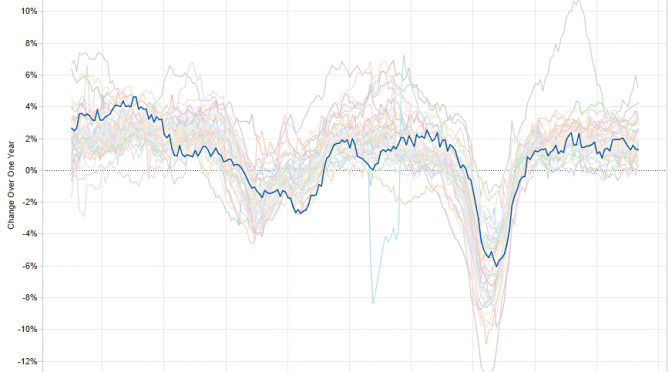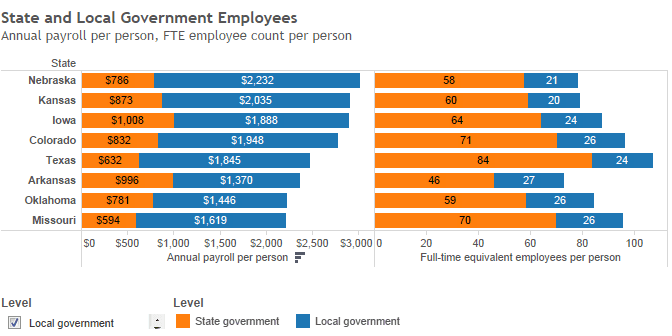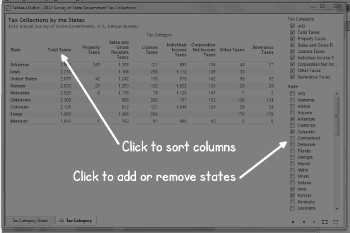 The evaluation of economic development incentives requires thinking at the margin, not the entirety.
The evaluation of economic development incentives requires thinking at the margin, not the entirety.
When considering the effect of economic development incentives, cities like Wichita use a cost-benefit analysis to determine whether the incentive is in the best interests of the city. The analysis usually also considers the county, state, and school districts, although these jurisdictions have no say over whether the incentive is granted, with a few exceptions. The basic idea is that by paying money now or forgiving future taxes, the city gains even more in increased tax collections. This is then pitched as a good deal for taxpayers: The city gets more jobs (usually) and a profit, too.
Economic activity generates tax revenue flowing to governmental agencies. When people work, they pay income taxes. When they buy stuff, they pay sales taxes. When they create new property or upgrade existing property, it is taxed.
In the calculation of cost-benefit ratios, when a company receives economic development incentives, government takes credit for the increase in tax revenue. Government often says that without the incentive, the company would not have located in Wichita. Or, it might not have expanded in Wichita. Or these days, it is claimed that incentives are necessary to persuade companies to consider remaining in Wichita rather than moving somewhere else.
But there are a few problems with the arguments that cities and their economic development agencies promote. One is that the increase in tax revenue happens regardless of whether the company has received incentives. What about all the companies that locate to or expand in Wichita without receiving incentives?
Related is that jurisdictions may grant relatively small incentives and then take credit for the entire deal. I’ve been told that when economic development agencies learn of a company moving to an area or expanding, they swoop in with small incentives and take credit for the entire deal. The agency is then able to point to a small incentive that enabled a huge deal. As you can imagine, it’s difficult to get the involved parties to speak on the record about this.
The importance of marginal thinking
Here’s an example of the importance of looking at marginal gains rather than the whole enchilada. In 2012, the City of Wichita developed a program called New HOME (New Home Ownership Made Easy). The crux of the program is to rebate Wichita city property taxes for five years to those who buy newly-built homes in certain neighborhoods under certain conditions.
 The important question is how much new activity this program will induce. Often government takes credit for all economic activity that takes place. This ignores the economic activity that was going to take place naturally — in this case, new homes that are going to be built even without this subsidy program. According to data compiled by Wichita Area Builders Association and the WSU Center for Economic Development and Business Research — this is the data that was current at the time the Wichita city council made its decision to authorize the program — in 2011 462 new homes were started in the City of Wichita. The HOME program contemplated subsidizing 1,000 homes in a period of 22 months. That’s a rate of 545 homes per year — not much more than the present rate of 462 per year. But, the city has to give up collecting property tax on all these homes — even the ones that would be built anyway.
The important question is how much new activity this program will induce. Often government takes credit for all economic activity that takes place. This ignores the economic activity that was going to take place naturally — in this case, new homes that are going to be built even without this subsidy program. According to data compiled by Wichita Area Builders Association and the WSU Center for Economic Development and Business Research — this is the data that was current at the time the Wichita city council made its decision to authorize the program — in 2011 462 new homes were started in the City of Wichita. The HOME program contemplated subsidizing 1,000 homes in a period of 22 months. That’s a rate of 545 homes per year — not much more than the present rate of 462 per year. But, the city has to give up collecting property tax on all these homes — even the ones that would be built anyway.
What we’re talking about is possibly inducing a small amount of additional activity over what would happen naturally and organically. But we have to subsidize a very large number of houses in order to achieve that. The lesson is that we need to evaluate the costs of this program based on the marginal activity it may induce, not all activity. For more, see Wichita new home tax rebate program: The analysis.










 City documents estimate that the property tax savings for the first year will be $312,055. This exemption will be granted for five years, with a second five year period possible if performance goals are met.
City documents estimate that the property tax savings for the first year will be $312,055. This exemption will be granted for five years, with a second five year period possible if performance goals are met.







